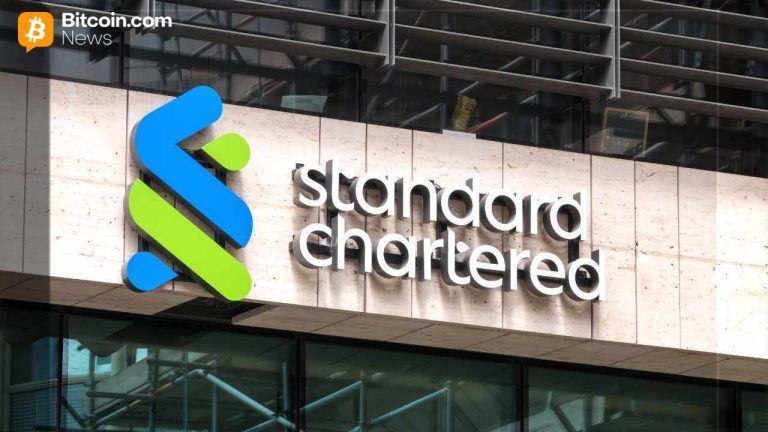Investors taking stock of a fast correction, flatter curve
11 min readMunicipal bond yields rose on the short end Friday as munis again played catch up to the moves in short U.S. Treasuries and investors became more aggressive in bid lists for high-grade paper.
The UST note, 0.785% on Tuesday, touched 0.96% in the afternoon and was at 0.89% near the close Friday, leading to the front-end pressure on munis.
A high-grade bid list out in the front end of the curve inside 10 years saw mixed results, according to Greg Saulnier, managing analyst at Refinitiv MMD. There were few blocks to point to out long as trading was concentrated on bonds inside 15 years.
“I think it’s a combination of low gross yields, still rich municipal to UST ratios, and now the front end of the Treasury curve is under pressure,” particularly after noted dove St. Louis Fed President James Bullard said he sees a rate hike in 2022, “which I think caught a few people off guard,” Saulnier said.
While the correction on Thursday which continued Friday morning caught many off guard, with analysts calling the muni market reaction “strange,” the new yield set should offer better entry points for reinvestment needs heading into July.
“It may also bring a modest widening trend into quarter-end in revenue sectors that have performed so well this year — healthcare and transportation, in particular,” said FHN Senior Vice President Kim Olsan.
While a fast and sharp adjustment isn’t anything new for the market, “it was the largest since the mid-February to mid-March timeframe that ultimately led to a 45 basis-point jump,” Olsan noted.
“The current cycle will help realign relative value ratios between three and seven years back toward their three-month average range of 55%,” Olsan said. “Since the start of the quarter, the curve slope has flattened 30 basis points — pointing to the area where flows have been more protected across multiple buyer segments.”
Municipal to UST ratios have risen this week with the 10-year landing at 66% while the 30-year was at 72%, according to Refinitiv MMD. ICE Data Services had the 10-year muni-to-Treasury ratio at 66% and the 30-year ratio stood at 73%.
The five-year and lower also moved higher Friday as municipal rates rose. Refinitiv MMD had the five-year at 57% and ICE pegged it at 51% and had its one-year at 99%.
Barclays strategists Mikhail Foux, Clare Pickering and Mayur Patel said in light of the aggressive flattening of UST curves, “muni investors have refocused on the shapes of tax-exempt yield curves, which have slowly been flattening pretty aggressively since early May.”
Thursday was “especially confusing” in the municipal market, with UST rates falling about 10 basis points, and long-dated tax-exempt yields increasing four to seven basis points, moving municipal to UST ratios steeper in a meaningful way, they wrote.
As the flattening trend in Treasuries takes hold, demand for duration will also spill over into the tax-exempt space, with long-dated tax-exempts continuing to outperform, Barclays said.
“However, aside from long-dated munis, we also find value in the 10-year part of the curve that has underperformed in 2021, should do better than the front end — we see the 5s, 10s curves flattening further.”
Olsan noted that after the FOMC meeting Wednesday and the muted response that day, activity turned from a risk-on theme to a greater risk-off theme. Friday’s session continued that theme.
“Sellers — sending better bid sides in more traditional credits — fed into what are more defined spreads for cash-raise needs,” she said. “In the post-Fed session, transportation, healthcare and housing bonds saw reduced volume and GOs, education, utility and tax-backed names drew more flows.”
While muni rates moved higher this week, there is still a lot of cash on the sidelines and the calendar has built to supply some of that demand. The total potential volume for next week is estimated at $10.1 billion, up from $9.948 billion this week. There are $8.2 billion of negotiated deals versus a revised $7.273 billion this week and $1.971 billion of competitive loans versus $2.674 billion this week. About 30% of the calendar, $3.4 billion, is taxables.
The diverse calendar has large state GOs from Tennessee, competitive deals from Idaho, Georgia Road and Tollway Authority and a large amount of Texas Independent School District PSF guaranteed paper as well as quite a few of triple-A deals, including Yale University bonds.
With just nine sessions left in the month, performance is less favorable in shorter, high-grade tax-exempts and more so in down-in-credit, long structures, Olsan noted. Short-dated bonds are slightly in the red, long bonds have gained about 80 basis points and taxables have earned over 1% this month, she said citing the Bloomberg Barclay’s index figures.
Secondary trading and scales
Out of the gates, shorter trades were showing investor demand for higher yields and relative value. Georgia 5s of 2022 traded at 0.12%-0.11%. Maryland 5s of 2022 at 0.12%-0.11%. North Carolina 5s of 2022 at 0.12%-0.11%. Massachusetts 5s of 2023 at 0.22%-0.20%. New York Dorm PIT 5s of 2023 at 0.22%.
Delaware 5s of 2024 traded at 0.20% versus 0.12% a week ago.
California 5s of 2025 traded at 0.41%-0.40%. Hennepin County, Minnesota, 5s of 2026 at 0.56%. Utah 5s of 2026 at 0.45%. Fairfax County, Virginia, 4s of 2027 at 0.64%. Florida 5s of 2029 at 0.89%. California 5s of 2029 at 0.87%.
King County, Washington, 5s of 2030 at 0.98% versus 0.92% Wednesday. NYC water 5s of 2031 at 1.03% Denver City and County 5s of 2032 at 1.05%.
Ohio water 5s of 2038 at 1.30%. Los Angeles Department of Water and Power 5s of 2036 at 1.21%-1.20% versus 1.15%-1.12% Wednesday. West Virginia 5s of 2041 at 1.47% -1.40%.
High-grade municipals were weaker on the short end all triple-A benchmarks on Friday. According to Refinitiv MMD’s AAA, short yields rose one basis point to 0.12% and one to 0.12% in 2021 and 2022. The yield on the 10-year was unchanged at 0.96% while the yield on the 30-year sat at 1.46%.
The ICE AAA municipal yield curve showed short maturities rise three basis points in 2022 to 0.11% and 0.15% in 2023. The 10-year maturity rose one basis point to 0.97% and the 30-year yield was unchanged at 1.47%.
The IHS Markit municipal analytics AAA curve showed short yields were two higher at 0.12% and 0.15% in 2021 and 2022, respectively, with the 10-year rising rose two to 0.96% and the 30-year yield unchanged at 1.46%.
Bloomberg BVAL AAA curve showed short yields rose two basis points to 0.11% and 0.14% in 2021 and 2022, with the 10-year unchanged at 0.95% and the 30-year yield rose one to 1.47%.
In late trading, the 10-year Treasury was yielding 1.45% and the 30-year Treasury was yielding 2.02%. Equities sold off, with the Dow Jones losing 523 points, the S&P 500 down 1.31% while the Nasdaq lost 0.92%.
Primary market
Los Angeles, California, is set to price $1.858 billion of tax and revenue anticipation notes on Tuesday. BofA Securities will run the books.
The Michigan Strategic Fund (Aa2//AA-/) is set to price on Tuesday $604 million of taxable limited obligation revenue bonds (Flint Water Advocacy Fund Project), serials 2022-2039, term 2051. Citigroup Global Markets Inc. is head underwriter.
The Gulf States Gas District (A2///) is set to price $556.6 million of gas supply revenue bonds. Goldman Sachs & Co. LLC is lead underwriter.
Tennessee (Aaa/AAA/AAA/) is set to price $492.7 million of taxable general obligation refunding bonds, serials 2021-2035. Jefferies LLC will run the books.
Tennessee is also set to price $164.9 million of tax-exempt general obligation refunding bonds on Wednesday. FHN Financial Capital Markets is lead underwriter.
The Indiana University Health, Inc. Obligated Group through the Indiana Finance Authority (Aa2/AA/AA/) is set to price on Thursday $407.8 million of taxable hospital revenue bonds, $300 million of which are corporate CUSIP. J.P. Morgan Securities LLC is lead underwriter.
Philadelphia (A1/A+/A+/) is set to price on Wednesday $359.5 million of taxable water and wastewater revenue refunding bonds, serials 2022-2036, terms 2041, 2045. Citigroup Global Markets Inc. is head underwriter.
The Town of West Hartford, Connecticut, (Aaa/AAA//) is set to price on Thursday $324.4 million of taxable general obligation bonds, serials 2022-2036, terms 2041, 2046. Raymond James & Associates, Inc. is bookrunner.
The State of Connecticut Health and Educational Facilities Authority (Aaa/AAA//) is set to price $300 million of Yale University revenue bonds, remarketing Series 2015A. Barclays Capital Inc. is head underwriter.
The Northern Tobacco Securitization Corp., Alaska, is set to price $284.8 million of tobacco settlement asset-backed refunding bonds, Series 2021 senior bonds, with $152.8 Series A, serials 2022-2041, term 2050, and $35 million of Series B1, terms 2031, 2050, and $97 million of Series B2, terms 2066. Jefferies LLC will run the books.
The Massachusetts Educational Financing Authority (/AA//) is set to price on Thursday $269.8 million of taxable education loan revenue bonds, serials 2024-2031, term 2037. RBC Capital Markets is head underwriter.
San Antonio, Texas, (Aa2/AA/AA/) is set to price on Tuesday $257.7 million of water system junior lien revenue and refunding bonds, serials 2022-2041, terms 2046, 2051. RBC Capital Markets is lead underwriter.
Glendale, Arizona, (/A+/AA-/) is set to price on Wednesday $252.8 million of taxable certificates of participation, serials 2024-2037. RBC Capital Markets is bookrunner.
Miami-Dade County, Florida, (A1/A+//) is set to price on Wednesday $244.5 million of subordinate water and sewer system revenue refunding bonds, serials 2027-2028, 2034-2044, terms 2046, 2048, 2051. RBC Capital Markets is head underwriter.
The Fort Worth Independent School District, Texas, (Aaa/AAA//) (PSF guarantee) is set to price on Thursday $242.5 million of unlimited tax school building bonds. Piper Sandler & Co is head underwriter.
The New York State Housing Finance Agency (Aa2///) is set to price $209.6 million of affordable housing revenue bonds on Tuesday consisting of $48.46 million of 2021 Series D-1 (Climate Bond Certified/Sustainability Bonds), $87.75 million of 2021 Series D-2 (Climate Bond Certified/Sustainability Bonds), $34.8 million of 2021 Series E-1 (Sustainability Bonds), $32.96 million of 2021 Series E-2 (Sustainability Bonds), and $5.65 million of 2021 Series F (Federally Taxable) (Sustainability Bonds). Morgan Stanley & Co. LLC will run the books.
The Northwest Independent School District, Texas, (Aaa//AAA/) (PSF guarantee) is set to price on Thursday $181.5 million of unlimited tax school building bonds, serials 2022-2046. RBC Capital Markets is head underwriter.
The Liberty Hill Independent School District, Texas, (Aaa///) (PSF guarantee) is set to price on Wednesday $180 million of unlimited tax school building bonds, serials 2022-2041, terms 2046, 2056. RBC Capital Markets will run the books.
The Richardson Independent School District, Texas, (Aaa/AAA//) (PSF guarantee) is set to price on Tuesday $179.1 million of unlimited tax school building bonds, serials 2022-2041, term 2046. Citigroup Global Markets Inc. is head underwriter.
The Lone Star College System, Texas, (/AAA//) is set to price on Wednesday $176.5 million of $161.5 million of limited tax general obligation bonds, Series 2021A, and $15 million of limited tax general obligation refunding bonds, Series 2021B. Morgan Stanley & Co. LLC will run the books.
The Boston Water and Sewer Commission (Aa1/AAA//) is set to price on Tuesday $138.8 million of general revenue and refunding bonds, $101.9 million of Series A taxable green bonds and $36.9 million of tax-exempts. BofA Securities is head underwriter.
The Waco Education Finance Corporation, Texas, (/A+/A+/) is set to price on Thursday $124.5 million of Baylor University revenue bonds. Morgan Stanley & Co. LLC is lead underwriter.
The Massachusetts Educational Financing Authority is set to price on Thursday $111.8 million of education loan revenue bonds, $71.8 million of Series B (/AA//) AMT, serials 2024-2031, term 2037, and $40 million of subordinate Series C (/BBB//), serial 2051. RBC Capital Markets will run the books.
The Sacramento City Unified School District (/AA//) is set to price on Tuesday $110.3 million of revenue and refunding bonds, Assured Guaranty Municipal Corp. insured. Raymond James & Associates, Inc. is lead underwriter.
The Metropolitan Water District of Southern California (Aa1/AAA//) is set to price on Wednesday $96.7 million of water revenue refunding bonds. Siebert Williams Shank & Co., LLC will run the books.
In the competitive market Tuesday, Idaho (MIG1/SP-1+//) is set to sell $300 million of tax anticipation notes (due 6/30/2022) at 11 a.m. eastern.
Denton, Texas, (/AAA/AAA/) is set to sell $97.5 million of certificates of obligation at 10:30 a.m. and $44.1 million of general obligation bonds at 11 a.m.
On Wednesday, the Georgia Road and Tollway Authority (Aaa/AAA//) is set to sell $210.5 million of managed lane system guaranteed revenue bonds at 10:15 a.m., $115.3 million of managed lane system guaranteed revenue bonds at 10:45 a.m. and $36.6 million of managed lane system guaranteed taxable revenue bonds at 11:15 a.m.
Hempstead, New York, is set to sell $140 million of public improvement bonds at 11 a.m.
Texas is set to sell $144.25 million of college student loan general obligation AMT bonds at 11 a.m. and $72.5 million of college student loan guarantee general obligation refunding AMT bonds at noon.
Quincy, Massachusetts, is set to sell $121 million of general obligation bond anticipation notes at 10 a.m.
On Thursday, Bryan Independent School District, Texas, (/AAA/AAA/) (PSF guarantee) is set to sell $120 million of unlimited tax school bonds at 10 a.m.
Inflation is still the issue
While the Federal Reserve deems inflation transitory, Stifel Chief Economist Lindsey Piegza notes, “for the average American it won’t feel that way.”
Supply-chain bottlenecks could linger for the next 12 months, she said, extending the run of “temporary” price pressures related to base effects from the decline when the pandemic-related shutdowns began last year.
And while the pathway of inflation is “still very much in line with where the Fed thought it was going,” Piegza sees it tailing off from its “peak, around early third quarter,” but still exceeding 2% by yearend.
The time it takes to rollout vaccines globally could impact the bottlenecks. “It is easy to forget that we are globally integrated and the rest of the world is still catching up,” she said. “The physical rollout of those is easier said than done, as infrastructure in some of the countries we get are goods from are lacking.”
However, Paul Christopher, head of global market strategy at Wells Fargo Investment Institute, thinks some of the inflation will become permanent. “We don’t think this will be a return to the 1970s-style inflation, but we could see higher wages and higher commodity prices next year, but not enough to derail markets.”
While globalization and technology are disinflationary influences, he said, China, which exports many products to the U.S., “is also seeing increased pricing pressure and we could import some inflation.”
But, overall, Christopher said, “inflation expectations are not signaling that inflation is here to stay.”
WFII sees inflation dissipating later this year and expects 3.8% inflation in 2021 and 2.8% in 2022.
Joe Kalish, chief global macro strategist at Ned Davis Research, expects personal consumption expenditures to rise around 3.4% this year 2.1% next year, with risks to the upside. He worries about inflation expectations surpassing 2% while employment slack remains.
Shelter, which accounts for 39% of the consumer price index and 40% of core, could be an issue, he said. “Shelter has been down for so long, now we are seeing it start to make a comeback.”
Monthly rents gained 1.3% in April and then 2.3% in May, the largest increase since 2015, according to Zillow.
“That is something to pay attention to and is worrisome because shelter is not transitory,” Kalish said, “it is sticky.”
Piegza is not as worried about the shelter component of inflation. “Not all renters are equal, from what I am seeing, the higher income, higher rent families are still moving outside of the cities and some of the younger, lower income and lower rents are moving back in.” And there’s also the question of working from home and how long it will last and what the implications will be for rent if people can work remotely from lower-priced areas.
Kalish expects the Fed to announce the start of tapering sometime “between the Jackson Hole Economic Symposium at the end of August and the November 3 FOMC meeting,” with tapering starting in January 2022.







